Discover the name for those beautiful pages you find at the very beginning and very end of some books. Plus learn how endpapers, which usually contain illustrations but very few words, can help children with their reading.
What Are Endpapers?
Endpapers are the first and last pages you see in a book. Like this endpaper page spread from the classic Caldecott Honor Book Madeline by Ludwig Bemelmans.

In a paperback book these pages are usually just plain white. Not much to catch your eye.
But then there are the endpapers found in hardcover picture books! Gorgeous works of art by the book’s illustrator.
In the world of children’s literature and kids books illustrated endpapers typically appear in:
- Picture books (almost always in the first edition hardcover versions and often in the paperback versions too)
- Board Books (sometimes)
- Graphic Novels
- Non-fiction Books (sometimes)
- Early readers and chapter books for developing readers
- The children’s book publisher Barefoot Books places a priority on illustrated endpapers
In the lingo of the publishing world “endpapers” are “parts of a book”.
Other parts include things like the copyright page, dedication page, front matter, end matter, table of contents, index, and acknowledgments. Plus, of course, the actual story pages themselves. Tip: You’ll often find hidden treasures in these often-overlooked parts of books. It pays to check them out and those who do are often rewarded for their efforts with Easter Eggs that help reveal more of the story.
Why Do They Matter?
Why should we care about endpapers? That’s a good question to ask. At first glance these pages, while pretty, may seem irrelevant to the activity of reading. They are a nice addition to a book but lacking in real value when it comes to learning to read or the enjoyment of reading.
Enter a term called “visual literacy”. Generally speaking it means “to interpret and construct meaning from visual images”.
Someone who is visually literate is able to describe how the illustrations and the text of a story relate to each other. Visual literacy is part of the standards used in education today. Teachers of children in preschool through sixth grade consider visual literacy in their reading instruction and incorporate lessons throughout the year to foster the development of this skill in their students.
What I Love About Endpapers
Endpapers are just flat out beautiful. I’m a very visual person and I enjoy looking at them. They make life more lovely, more interesting, more entertaining. I’m always curious to see which art the publishers select for the endpapers in a book.
Books with endpapers are usually printed on high-quality paper – and that means the endpapers may have a nice “feel” to them. I realize that may not seem important but you would be surprised at how much this “feel” and the enjoyment of “looking at the art” can appeal to children. And if they are enjoying a part of the book it increases their enjoyment of reading.
How to Use Endpapers
If a child really enjoys the endpaper art, then you can use their interest to further their exploration of the book and to develop their reading ability.
Here are a few ideas that have worked for our family:
Pure Enjoyment
Just enjoy the work of the illustrator. The more I learn about illustrators the more I realize the depth of their talent. Years of training and practice. Devotion to their personal style and craft. Endless hours working with authors, editors and publishers to marry the illustrations with the text of a story. All that is left to all of us is to take in the illustrations.
To Teach the Parts of a Book
I have a technique I use when I read aloud. First I read the title of the book and any other information listed on the cover (usually who wrote and illustrated the story). Then I open the book to the endpapers and I say something like, “Oh look, beautiful endpapers”. My point is to draw attention to the endpapers.
I use this technique every time I read a book aloud that has endpapers. Once I make the statement I move along to the copyright page, the dedication page, and the story itself. If the child asks me to stop and spend more time on the endpapers I do.
I never test or quiz the child on endpapers. I never ask them about these pages – I never say “what are these pages called?” There’s no need to test to confirm understanding.
If you repeat this phrase enough you will end up with a nine or ten year old who picks up a picture book, reads the cover of the book, then opens the book and says something like “Oh, look at these pretty endpapers.”
Art Activity – Draw Like an Illustrator or Explore Tracing
Check the book’s copyright page for details about how the illustrations were created. If that information is not provided you can usually find it with a quick Internet search. Next, use the same art materials to create your own pictures.
You can also trace some of the art from the endpapers. Tracing is a lot of fun for many kids. It’s a difficult thing to trace ALL of the endpaper art but that’s okay! You can use the snippets you children create in their scrapbooks, for bookmarks, or to make handmade cards.
Bookmarks
Books can and do get beat up. Sometimes they are past the point of repair. This can happen to the books in our own homes, or you may find a beat up book on a library withdrawn shelf, or at a book sale or yard sale. If the book is past repair you can do what I like to do. I cut the book apart and make bookmarks of the endpapers and illustrations.
A Few of Our Favorite Endpapers
Endpapers from “Madeline”
Written and illustrated by Ludwig Bemelmans. Published in 1934 by Viking Press.
Endpapers from “A Tree is Nice”
Written by Janice May Udry. Illustrated by Marc Simont. Published in 1956 by Harper & Row, Publishers.
Endpapers from a TOON Books Graphic Novel
TOON Books is an imprint of Candlewick Press. They publish graphic novels for young readers that use a leveled system to develops the ability to read and enjoy graphic novels.
Endpapers from “The Pilot and the Little Prince: the Life of Antoine de Saint-Exupéry”
Written and illustrated by Peter Sís. Published in 2014 by Farrar Straus Giroux Books for Young Readers.
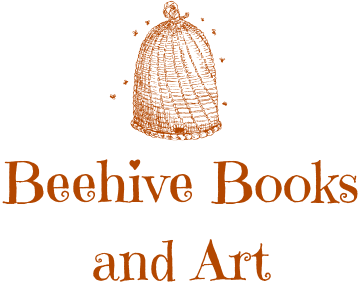
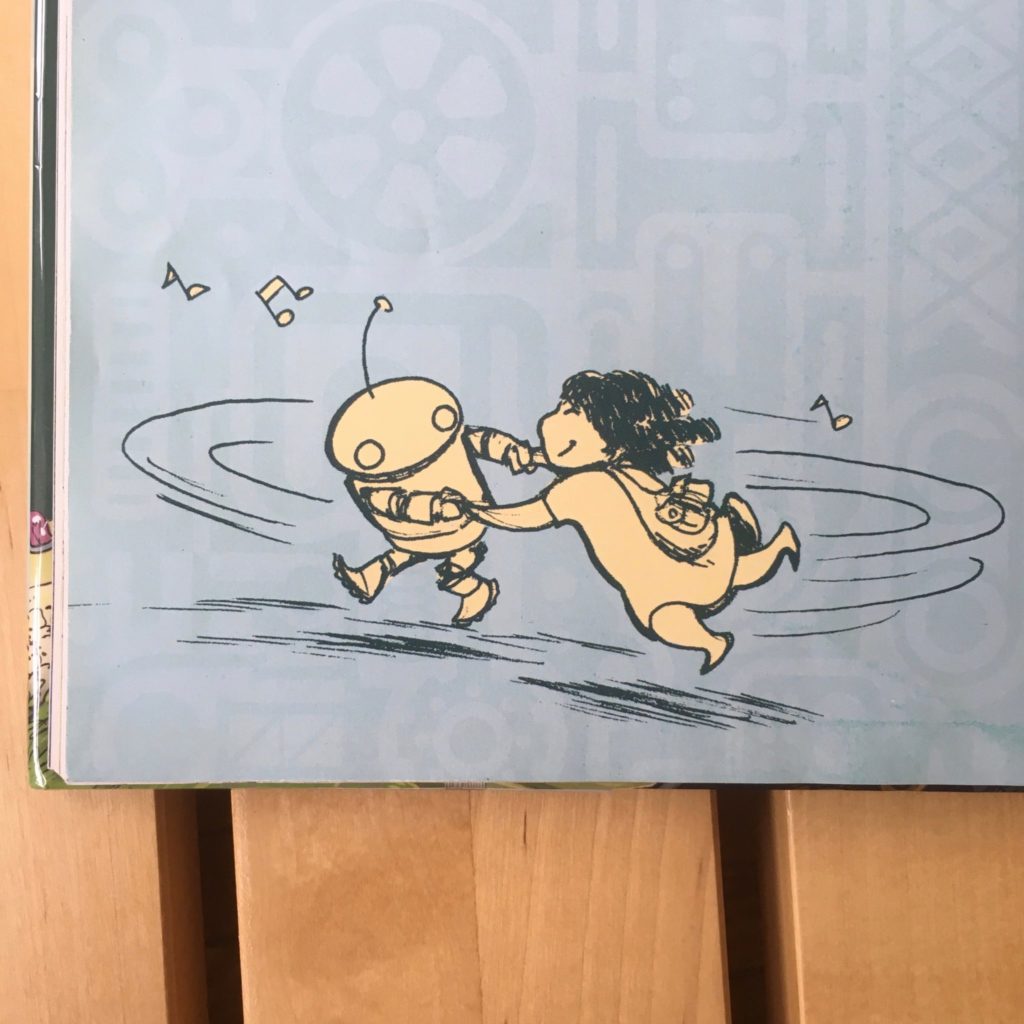
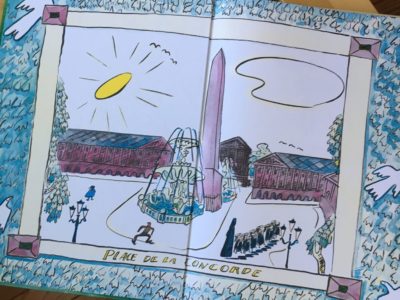
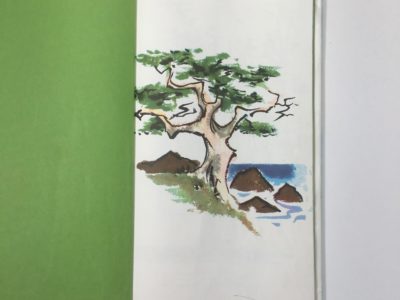

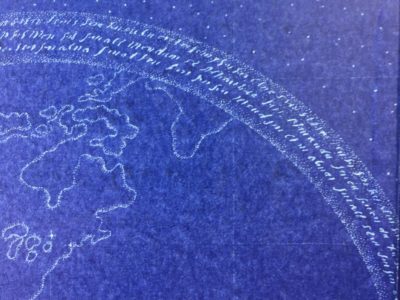
 Three Great Black-and-White Board Books for Baby
Three Great Black-and-White Board Books for Baby